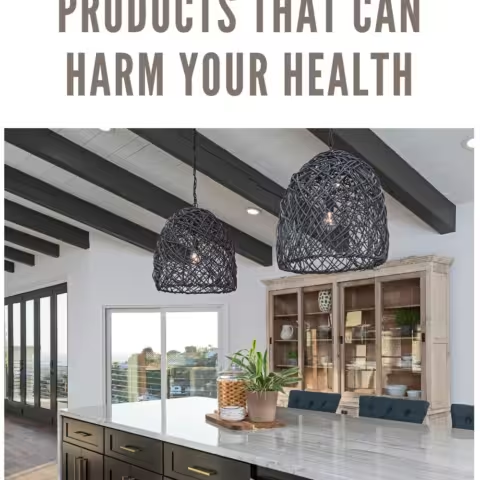When it comes to cutting unnecessary and harmful chemicals out of your life, you need to look at the products you have in your home. Several hidden dangers can be found in your home, which are completely unknown to the general population.
If you’re trying to go “green” or cut back on the number of pollutants you use around the house, the following list can help you determine what items to keep and which ones to toss.

4 Common Harmful Household Products
-
Non-Stick Cookware
Non-stick pans are an innovation that has been a blessing to home cooks everywhere. But is not having to scrape away burnt-on food or soaking your cookware overnight enough for you to ignore any disadvantages of the product?
Unfortunately, the non-stick element of these pans is made from small amounts of polytetrafluoroethylene. This compound releases gases that can have cancer-causing effects when heated. While polytetrafluoroethylene is used in manufacturing Teflon-coated pans, it is not enough to usually cause any harm. However, you can risk catching flu-like symptoms from breathing in fumes from a Teflon-coated cooking tool that has been overheated.
-
Flea and Tick Products
Ticks and fleas often carry diseases that can harm both pets and their owners. Some animals can even develop sensitivities and allergies to bites from these creatures, leading to loss of fur and skin irritation. fleas and ticks also can make your pets more susceptible to parasites and worms. Any medicine that can stop that is worth the risk, right?
Perhaps not. Certain tick and flea products can lead to damaging health issues due to their pesticides. Avoid flea and tick removal products that come in chews or pills. Many of these types of products contain isoxazoline. This ingredient not only has been associated with nerve damage and neurological adverse reactions but also seizures, muscle tremors, and ataxia. The last being a condition that leads to a lack of muscle control, causing your pooch to develop a twitch or stumble.
-
Mothballs
Mothballs are useful for storing clothes over long periods. Aside from the unpleasant musk, they do their job to keep pests from infesting your clothes while they sit in your basement/attic. While they are useful, they can also be poisonous to your family and pets.
A key component found in mothballs, naphthalene, can cause poisoning if its fumes are breathed in over a long period. There have been rare cases where children have been poisoned from wearing wool clothes stored in naphthalene products.
This compound also has been linked to cancer formation in animals and the destruction of red blood cells. If exposed to too many mothballs, other effects that you can experience include abdominal pain, vomiting, nausea, coma, and seizures.
Some brands of mothballs use a different active ingredient, paradichlorobenzene. This compound is less toxic, but it can still irritate and poison.
-
Herbicides
Herbicides are a common household item that eases the workload of maintaining your garden. However, many controversies have popped up concerning the safety of such products. When improperly used, these chemicals can contaminate water and cause health concerns to those who have come in contact with it.
Herbicides’ common active ingredients include atrazine, dacthal, Endothall, alachlor, and glyphosate. The last ingredient is a major component. As this lawsuit by Miller Firm LLC covers, glyphosate, and these other compounds can increase your risk of developing cancer, explains Business Insider. Beyond these claims, these chemicals can also cause health issues related to your spleen, liver, kidney, and eyes. Additionally, you can develop reproductive and cardiovascular system problems from long-term exposure.
The Bottom Line
With so many unsafe chemicals hidden in plain sight, it’s important to research the products that you bring into your home. Keep your family, pets, and the environment safe by switching to eco-friendly home products.
